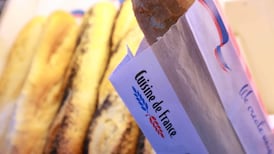FIRST Maryland Bancorp, AIB's US subsidiary, has recorded an 11.7 per cent growth in net profits from $29.1 million (£18.14 million) in the second quarter of 1995 to $32.5 million in the second quarter of 1996. The results were in line with expectations.
The growth has come from buoyant non interest income, particularly trust income and service charges and a continued control on costs. Interest income its main life blood, also grew, but at a slower rate than non interest income.
Further profit growth is expected in the second half. Riada Stockbrokers is retaining its forecast of $128 million net profit for 1996. This represents a 6.67 per cent gain on the $120 million generated in 1995.
First Maryland has just completed the acquisitions of First Washington Bancorp and Zirkin Cutler, a Washington based investment management firm. The absorption of the two is expected to be earnings neutral in the second six months. There will be some rationalisation costs, said Mr Declan McSweeney, AIB's group controller, but they should make a positive contribution in 1997.
Asked about further acquisitions, he said First Maryland was, continuing to seek further takeovers as it was "keen to expand". However, nothing was imminent. First Maryland's growth is some what less than other banks reporting in the US. This can be attributed to the less robust nature of the Baltimore economy. Commercial retailing is said to be improving.
The latest results are not directly comparable with the same period in 1995 because of provisions and a $335 million securitisation of credit card receivables which have distorted the figures. Interest income, for example, appeared flat with a 2.1 per cent fall from $175.9 million to $172.2 million. That, however, gives a distorted view of the underlying trend because interest on the credit cards was moved from the interest income category into the non interest income. Mr McSweeney said there was an underlying growth of 4.7 per cent which the bank considered very satisfactory.
Non interest income grew by an adjusted rate of 11.8 per cent to £53.1 million. Income from credit cards fell from $9.18 million to $8.46 million. This, however, is attributed to an unquantified level of bad debts. Mr McSweeney said that the underlying growth is up. The credit card book increased from's $654 million in December 1995 to $740 million by June 1996.
Interest expenses fell from $78.4 million to $75.6 million. Non interest expenses rose by 3 per cent to $99.2 million. The bulk of these expenses however were pretty flat. The cost/income ratio amounts to 66.3 per cent. The bank has a target to reduce this to 60 per cent.
The balance sheet showed a reduction in resources from $6.97 billion in March 1996 to $6.92 billion. This was attributed to a reduction in foreign deposits. Loans to property and construction contracted but loans to retail jumped from $1.1 billion to $1.27 billion.









